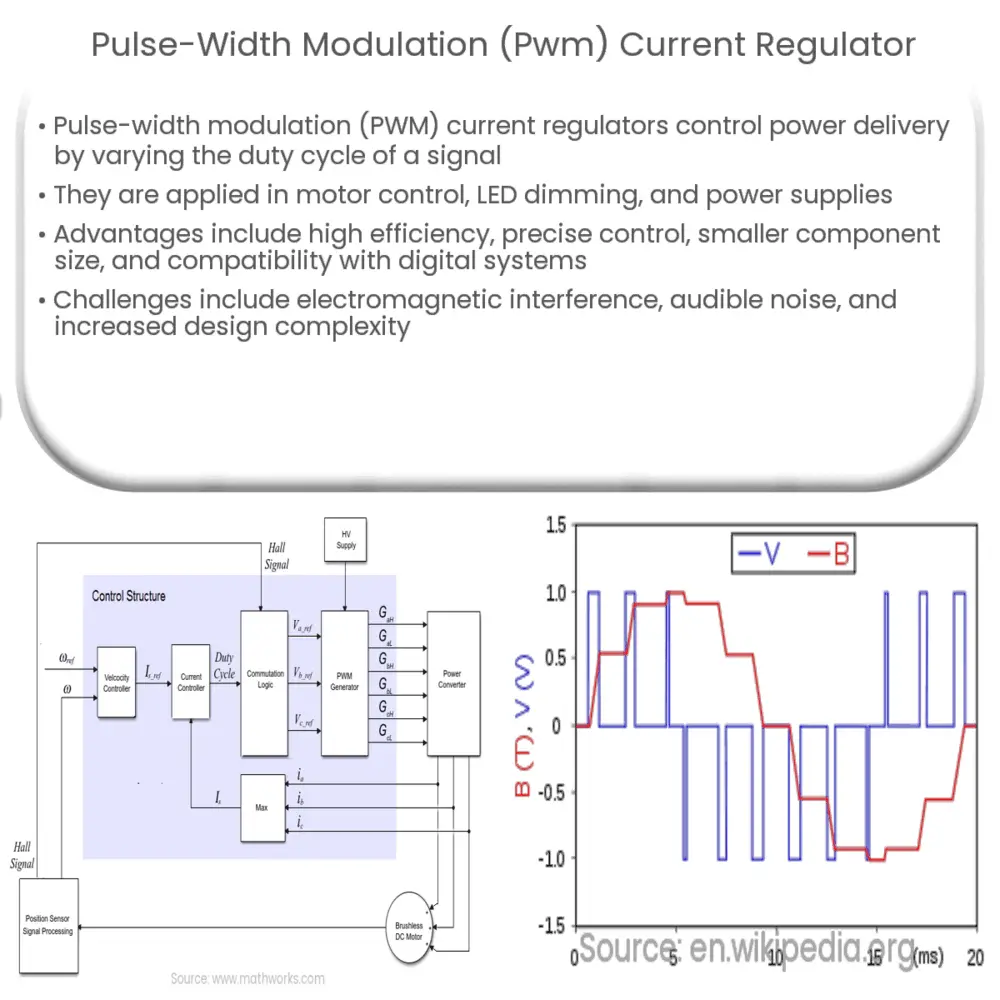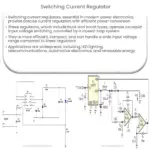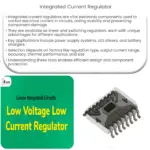PWM current regulators control power in various applications by adjusting the duty cycle, enabling efficient and precise power delivery.

Pulse-Width Modulation (PWM) Current Regulator: An In-Depth Overview
Introduction
Pulse-width modulation (PWM) is a technique used in various applications to control the power delivered to electrical devices. This method involves varying the duty cycle of a periodic signal, which in turn controls the average voltage and current applied to a load. In this article, we’ll explore the principles behind PWM current regulation, its applications, and advantages.
Understanding PWM
PWM is a technique for encoding analog signals into digital form. It’s done by modulating the width of the pulses in a fixed-frequency pulse train, with the pulse width proportional to the amplitude of the analog signal. The duty cycle is defined as the percentage of time the signal is high during one period. By varying the duty cycle, it’s possible to adjust the average power delivered to a load without changing the frequency of the signal.
How PWM Current Regulation Works
In a PWM current regulator, the current flowing through a load is controlled by adjusting the duty cycle of the PWM signal. The switching element, usually a transistor, alternates between a conducting state (on) and a non-conducting state (off), with the duty cycle determining the amount of time spent in each state. When the transistor is on, the current flows through the load, and when it’s off, the current stops flowing. By adjusting the duty cycle, the average current delivered to the load can be controlled.
For example, if the PWM signal has a duty cycle of 50%, the switching element is on for half of the time and off for the other half. This results in an average current flow of 50% through the load. If the duty cycle is increased to 75%, the switching element is on for three-quarters of the time, delivering 75% of the maximum current to the load.
Applications of PWM Current Regulation
PWM current regulators find applications in various fields due to their ability to control the power delivered to electrical devices. Some common applications include:
- Motor control: PWM is widely used in controlling the speed and torque of DC and brushless motors in robotics, automotive systems, and other industrial applications. The varying duty cycle helps in maintaining a constant current, resulting in precise control of motor speed.
- LED dimming: In LED lighting systems, PWM current regulators help control the brightness of LEDs by adjusting the average current flowing through them. This results in energy-efficient and precise control of lighting systems.
- Power supplies: PWM is used in switch-mode power supplies (SMPS) to regulate the output voltage and current. The high efficiency and compact size of these power supplies make them popular in various electronic devices.
Advantages of PWM Current Regulation
There are several advantages to using PWM current regulators in various applications, including:
- High efficiency: PWM regulation is more energy-efficient than linear regulation, as it involves switching instead of dissipating excess power as heat. This leads to lower energy consumption and reduced heat generation.
- Wide range of control: PWM allows for a wide range of control over the output power, enabling precise control of motor speed, LED brightness, or power supply voltage and current.
- Reduced component size: Since PWM regulators have high efficiency and produce less heat, they require smaller heat sinks and components, resulting in compact designs.
- Compatibility: PWM signals can be easily generated and controlled by microcontrollers and digital signal processors, making them compatible with a wide range of electronic systems.
Challenges and Limitations of PWM Current Regulation
Despite its numerous advantages, there are a few challenges and limitations associated with PWM current regulation:
- Electromagnetic interference (EMI): The high-frequency switching in PWM systems can generate electromagnetic interference, which may affect the performance of other electronic components in the vicinity. Proper shielding and filtering techniques must be employed to mitigate this issue.
- Audible noise: In some applications, such as motor control, the switching frequency of the PWM signal may fall within the audible range, causing acoustic noise. This can be addressed by increasing the switching frequency or using specialized techniques like spread spectrum modulation.
- Increased complexity: PWM current regulators are more complex than linear regulators, requiring additional components and control circuitry. This can lead to increased design complexity and cost.
Conclusion
Pulse-width modulation (PWM) current regulators have become a popular technique for controlling power in various applications, including motor control, LED dimming, and power supplies. The method offers numerous advantages, such as high efficiency, precise control, reduced component size, and compatibility with digital systems. However, designers must be aware of the challenges and limitations associated with PWM regulation, such as electromagnetic interference and audible noise, and take appropriate measures to mitigate them.
By understanding the principles, applications, advantages, and challenges of PWM current regulation, engineers and designers can make informed decisions when selecting and implementing this technique in their projects and products.




